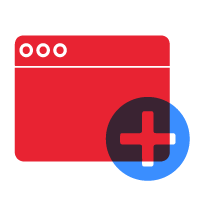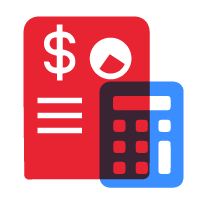Mastering Average Handle Time (AHT) is essential for any business striving to deliver exceptional customer service while maintaining operational efficiency. This vital metric holds the key to unlocking better customer satisfaction, streamlined call center operations, and optimized costs. Understanding how to manage AHT effectively can transform your customer interactions, empower your agents, and elevate your entire customer service strategy.
If your business aims to enhance customer service quality, boost team productivity, and reduce call center costs, then grasping the impact of AHT is a crucial first step. In this comprehensive guide, we will explore why AHT matters, the challenges that affect it, and proven strategies to optimize it—helping you find the perfect balance between speed and service excellence.

What is Average Handle Time (AHT)?
Average Handle Time (AHT) is a key performance indicator used in call center operations to measure the average duration it takes to complete a customer interaction. This metric encompasses several related tasks, including:
- Talk Time: The duration of the actual conversation between the customer and the call center agent.
- Hold Time: The time a customer spends on hold during the interaction, often while the agent consults resources or transfers the call.
- After-Call Work (ACW) or Post-Call Time: The administrative tasks agents perform after the call ends, such as logging notes, updating customer records, or scheduling follow-ups.
How to Calculate Average Handle Time
The formula to calculate AHT over a specified period is:
AHT = (Total Talk Time + Total Hold Time + Total After-Call Work) ÷ Total Number of Calls
For example:
If your call center agents handled 500 calls in one day, with a total of 1,250 minutes spent on talk time, 300 minutes on hold time, and 450 minutes on after-call work:
AHT = (1250 + 300 + 450) ÷ 500 = 4 minutes per call
This calculation provides the average length of time customers spend interacting with agents and related call center software systems during each transaction.
Why Average Handle Time Matters for Your Business
Balancing operational efficiency with exceptional customer experience is a key challenge in customer service operations. AHT provides valuable insight into this balance by reflecting how efficiently center agents handle customer interactions without compromising service quality.
1. Operational Efficiency and Cost Control
A lower AHT means call center agents spend less time per interaction, enabling your business to handle more calls with the same workforce. This optimization reduces labor costs and improves call center performance, allowing you to serve more customers without increasing call center costs.
2. Customer Experience (CX) and Satisfaction
While customers value quick resolutions, they also expect thorough and empathetic service. Tracking AHT helps ensure agents resolve issues efficiently without rushing customers, which can lead to frustrated customers and negatively impact customer satisfaction scores. Proper management of AHT contributes to improved customer satisfaction and loyalty.
3. Workforce Planning and Management
Understanding AHT enables call center managers to forecast staffing needs accurately, manage call volume fluctuations, and schedule agents effectively. This is crucial for maintaining service-level agreements (SLAs) and ensuring adequate coverage during peak periods, minimizing missed calls and long wait times.
4. Performance Management and Agent Development
AHT serves as a benchmark for evaluating individual agent performance. It helps identify agents who may require additional training or coaching to handle calls more efficiently. Monitoring AHT alongside other key metrics like first contact resolution and customer satisfaction score provides a comprehensive view of agent effectiveness.
5. Integration with Call Center Software and Analytics
Modern call center software integrates AHT tracking with call recording, speech analytics, and unified communications platforms. These tools provide detailed insights into call handling patterns, internal communications efficiency, and areas where workflow automation or workforce optimization can reduce unnecessary delays and post call time.
What is a Good Average Handle Time?
A “good” AHT varies widely depending on your industry, call types, and the complexity of customer issues. Here are some industry benchmarks for voice calls:
| Industry | Average Handle Time |
|---|---|
| Retail & E-commerce | 4 – 6 minutes |
| Telecommunications | 6 – 8 minutes |
| Financial Services | 7 – 9 minutes |
| Healthcare Support | 7 – 10 minutes |
| Technical Support | 8 – 12 minutes |
Note that digital channels such as live chat, email, and social media often have different AHT ranges and should be measured separately to reflect their unique interaction dynamics.
Ultimately, a good AHT aligns with your customer satisfaction goals and SLAs. It is not about rushing customers but about resolving issues effectively and consistently while minimizing time customers spend waiting or on hold.
Common Challenges that Lead to High AHT
Before attempting to reduce AHT, it is critical to identify the root causes that contribute to extended handle times. Common challenges include:
1. Insufficient Agent Training
Agents lacking comprehensive product knowledge or soft skills may take longer to resolve issues. This often results in increased hold times as agents consult supervisors or escalate calls, and repetitive questioning that frustrates customers.
2. Outdated or Disconnected Systems
When agents must toggle between multiple platforms such as CRM, billing, and ticketing systems without integration, valuable time is lost. Disconnected systems lead to duplicate data entry and inaccuracies, increasing after-call work and total handle time.
3. Inadequate Knowledge Base and Internal Communications
Without quick access to accurate, up-to-date information through a centralized knowledge base or unified communications tools, agents experience delays searching for answers, leading to unnecessary call transfers and longer calls.
4. Complex or Unstructured Workflows
Manual after-call work, unclear escalation paths, and lack of decision-making autonomy all add to total handle time. Inefficient workflows increase the post call time agents spend on administrative tasks.
5. High Customer Effort and Frustration
Customers who must repeat information multiple times, navigate confusing interactive voice response (IVR) systems, or endure long wait times contribute to longer calls and lower customer satisfaction.
Strategies to Optimize AHT Without Sacrificing Quality
Reducing AHT requires a balanced approach that maintains or improves service quality. Here are proven strategies to optimize AHT effectively:
1. Strengthen Agent Onboarding and Continuous Training
Provide comprehensive, scenario-based training that covers product knowledge, communication skills, and system navigation. Use call recording and speech analytics to identify coaching opportunities and reinforce best practices through ongoing training.
2. Use Scripting as a Flexible Guide
Implement dynamic call scripts that assist agents in navigating common queries while allowing personalization and empathetic communication, ensuring customers feel heard and valued.
3. Streamline Technology with CRM and System Integrations
Integrate all relevant customer data into a single, unified call center software dashboard. Automate data entry and provide real-time access to historical interactions to reduce hold times and after-call work.
4. Leverage AI and Automation
Deploy AI-powered chatbots and self-service tools to handle routine inquiries across digital channels. Use agent-assist tools that suggest next best actions during live calls to improve resolution speed and accuracy.
5. Implement Smart Call Routing and IVR Optimization
Use skills-based routing to connect customers with the most appropriate center agents quickly. Optimize IVR menus to minimize unnecessary transfers and reduce time customers spend navigating phone menus.
6. Improve Knowledge Management
Maintain a searchable, up-to-date internal knowledge base with tagging and AI-powered search capabilities to help agents find answers faster and reduce call durations.
7. Automate After-Call Work
Use templates and auto-logging tools to streamline post call time, allowing agents to complete administrative tasks efficiently and focus more on customer interactions.
8. Monitor Key Metrics Alongside AHT
Track complementary KPIs such as first contact resolution, customer satisfaction score, and net promoter score to ensure that reductions in AHT do not compromise service quality or customer experience.
AHT in an Omnichannel Environment
In today’s omnichannel customer service operations, AHT must be tracked across all communication channels, including voice calls, live chat, email, social media, and messaging apps. Each channel has unique interaction patterns and requires tailored metrics and service level agreements.
| Channel | Typical AHT Range |
|---|---|
| Phone Calls | 4 – 10 minutes |
| Live Chat | 2 – 6 minutes |
| Email Support | 15 – 30 minutes |
| Social Media | 10 – 20 minutes |
| Messaging Apps | 3 – 10 minutes |
Measuring AHT across digital channels alongside traditional calls provides a holistic view of customer service performance and helps optimize resource allocation.
Final Thoughts: Use AHT as a Tool, Not a Target
Average Handle Time is a powerful and important metric that offers valuable insights into the efficiency of your customer service operations. However, it should never be pursued as a standalone target or used to pressure agents into rushing customers. Instead, AHT must be considered within a broader context of center metrics, including first contact resolution, customer satisfaction score, customer effort, and net promoter score.
Effective management of AHT involves balancing operational efficiency with service quality. The goal is to optimize the time an agent spends interacting with customers—encompassing talk time, hold time, and after call work time—without compromising the customer experience. This means avoiding the temptation to hurry customers, which can lead to unresolved issues and increased repeat calls.
By integrating AHT data with call recording, speech analytics, and workforce management tools, call center managers can identify patterns, uncover root causes of extended periods of high handle time, and implement targeted agent training and process improvements. This holistic approach ensures that reductions in AHT contribute to enhanced customer care and improved agent performance.
Ultimately, use Average Handle Time as a strategic tool to drive smart efficiency—delivering fast, friendly, and effective support that delights customers, strengthens loyalty, and optimizes call center operations and costs over the long term.
Ready to Improve Your AHT and Transform Customer Support?
Outsource Philippines is your trusted partner in elevating customer service. Whether you need to reduce AHT, scale support operations, or deliver omnichannel experiences, we bring the expertise, people, and tools to make it happen.
Let us help you:
- Improve AHT across all channels
- Deliver higher CSAT and FCR scores
- Optimize your contact center costs
- Scale your team without the overhead
Contact us today to schedule a free consultation and discover how Outsource Philippines can streamline your customer service—so you can focus on growing your business.







